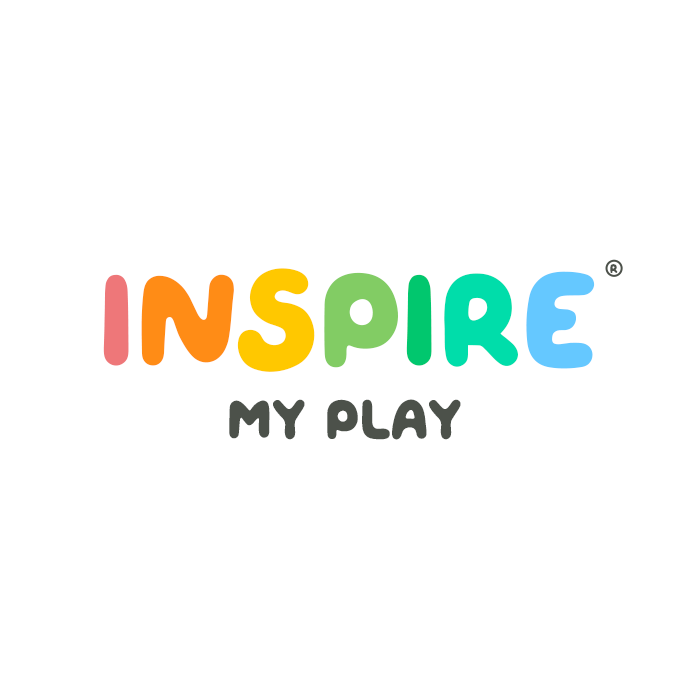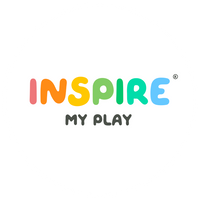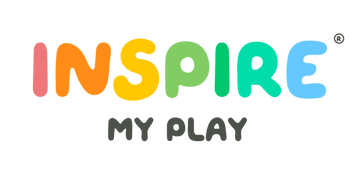Sensory Play for Babies: 20+ Simple and Fun Ideas
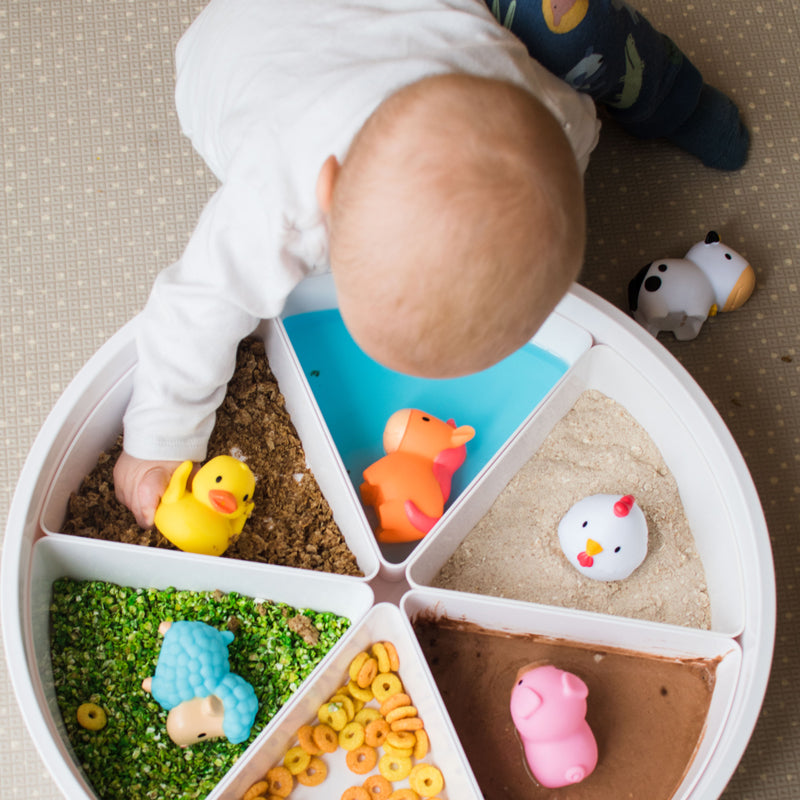

Laura @inspiremyplay
Founder of @inspiremyplay, Early Years teacher for 11 years and mummy to three gorgeous girls. I'm passionate about about the benefits of play in early childhood.
This post may contain affiliate links. This means that if you click on a link and go on to make a purchase, I may receive a small commission (at no additional cost to you). Please read my disclosure policy for more details.
As soon as they are born, babies begin taking in the sights, sounds, tastes, and textures around them. Along with giving your infant rich sensory experiences right away, sensory play can be a great way for you to bond with your little one. But getting started can feel a little daunting, especially when it comes to thinking up ideas of what to play and choosing the right resources. But don’t worry - we’re here to help. In this blog post we’ve pulled together a list of ideas to get you started. As always, child safety should always be at the forefront of your minds when engaging in sensory play with young children. Please take a read of our guidelines first for enjoying sensory play safely.

What is Sensory Play?
Sensory play focuses on activities that engage your child's senses, helping them develop language skills and motor skills. It includes hands-on activities that stimulate touch, sight, smell, sound, and taste, as well as movement or balance.
Why is it important to encourage Sensory Play?
Sensory Play has an important role in your child’s development from birth to early childhood. In fact, advances in neuroscience have shown that the first few years of life are a critical period for brain development, with experiences during this time shaping the foundations for future learning, social and emotional development and overall health and happiness. Sensory stimulation is an important way that babies first get to know the world around them. Allowing them to explore freely and get messy can support them to learn more effectively and provides a whole range of benefits:
- It helps with language development. By engaging the senses, your child will learn how to describe what they’re doing and how it feels;
- It helps with cognitive growth. As sensory play develops to hands-on activities, it also plays an important role in helping children build cognitive skills involved in problem solving and abstract thinking. When young children are allowed to play independently, they are more likely to naturally exhibit curiosity and perseverance, two qualities that are crucial for success in school and, later in life, in the workplace;
- It fosters social interactions and encourages experimentation;
- There are physical benefits too. It helps with fine and gross motor skills. Through tactile play that focuses on building, pouring and mixing, your child builds on their ability to use small muscle groups and coordinate movements. Simple activities like playing with play dough helps to build your child’s gross motor skills, making those little hands stronger.
Activity Ideas 0-9 months +
At first your newborn will engage in sensory activities more passively than actively as they take in the textures, smells, sights, and sounds around them. But it won't take long for your baby to begin mouthing, grabbing and eventually crawling towards everything that captures their interest. Here are a few simple activities which will aid sensory stimulation:
Turn tummy time into a sensory experience
Try tummy time on a bright, colorful play mat to turn tummy time into a sensory experience.

Use black and white shapes around your little ones play area
Babies have an easier time focusing on high contrast objects during early development. Because high contrast images are easier for babies to focus on and interpret, they are the best way for your tot to lengthen their attention span, improve their memory and develop their nervous system.

Have fun at bath time with water play
When your baby is old enough to sit up in the bath (or sensory bin), add in some floating toys. She’ll enjoy watching them move in response to her splashes.
Explore different textures
A perfect little gift for a newborn are chiffon scarves. Babies have so much fun playing peek-a-boo with these! Also great for tying to a play gym to explore or wrapping up toys inside for them to discover. And when they’re a bit older they can be used for movement and dance.

Make music and sing
Create a singing basket by popping in props to represent their favourite songs. Then simply let them choose an object from the basket and enjoy a good sing-song together. Singing songs and nursery rhymes with little ones is so important for language development & listening skills and is such a great way of bonding with your baby. I also find this a fantastic activity to involve older siblings in.

Let your baby mouth safe objects
Provide plenty of clean, baby-safe objects for your little one to reach for and chew on, such as rattles and teethers. Babies learn by placing things in their mouth.

Activity Ideas 9 months+
From around 9 months or so your little one will be ready to do a wider range of sensory play activities:
Edible and taste-safe Sensory Bases
There are a whole host of exciting sensory play experiences ready to be discovered as your child grows older, but in the early years, when babies and toddlers are still using their mouths to explore and understand the world around them, it is safer to stick to edible and taste-safe sensory play experiences. There is often a misunderstanding about how taste-safe and edible play differ, but there is an important distinction.
Taste-safe sensory play involves using materials that are non-toxic and food-grade and therefore safe for children to put in their mouths. However, these materials might not necessarily be intended for consumption and might not taste very appealing! Examples include dried pasta, oobleck and homemade play dough. Whilst consuming taste-safe sensory materials should be discouraged, if a child happens to ingest a small amount whilst playing, it will not be harmful to them.
Edible sensory play on the other hand, consists of materials specifically designed for consumption. These materials are not only safe to put in the mouth but are also intended to be eaten like jelly, fruit, cereal and spaghetti. Edible sensory play helps children to explore new textures, tastes and smells and can be also used to help them learn about food and healthy eating habits. The food item may also be part of a more elaborate play experience where other materials are added, for example a tray of cereal and some diggers to transport it around.
Edible play is great place to start with babies and young toddlers as it appeals to their natural instinct to explore using their mouth and is a great way of introducing new food experiences. As they grow older and start to show an interest in exploring materials in other ways you can begin to introduce taste-safe sensory play options, whilst knowing that if they do ingest some small amounts they will be okay. Once children are out of the mouthing phase completely you will be able to introduce inedible play materials such as sand and shaving foam.
Edible Oat Sensory Bin
A child's ability to concentrate on a sensory play activity will develop as they grow, but initially their attention spans are likely to be quite short and they will tire easily from stimulating activities. With this in mind, low prep play ideas are best for babies and young toddlers. A lovely, simple idea for a first sensory play experience is to pour some oats into a tray and bury some objects or their favourite toys in it for them to discover. Very simple concepts such as this can be exciting for little ones and this will teach them about object permeance.

Edible Cereal Safari
Set up a cereal safari using cereals with different textures and shapes. For toddlers you could even grind some cereal in a blender to make sand. Hannah from @babyplayhacks writes: “These taste-safe options are great for exploring textures or setting up scenes for small world play....I started by offering just one at a time for my 14 mo, but my toddler was able to play with the whole set up. Is your little one into new textures or do they have a hard time with them? Exposure to new textures can be helpful, especially for picky eaters!”
Edible Waterbeads - Tapioca Pearls
Check out this fun, messy sensory experience from @bright_little_brains. These ‘edible waterbeads’ are actually Tapioca pearls. They’re brilliant for mouthing toddlers and safer for our youngest PlayTRAYers. They’re also so much fun to explore!
WHAT DO I NEED?
- Tapioca pearls
- Liquid food colouring
- Pot boiling water
- Bowls
- @inspiremyplay PlayTRAY
- Sensory tools / Easter eggs
INSTRUCTIONS?
- Boil 1 cup tapioca pearls for 5-10 minutes on the stove
- Divide the tapioca pearls in separate bowls depending on how many colours you want to make.
- Add ONE drop of food colouring and a bit of water and mix until all the pearls are covered in colour
- Let it stand for 10 minutes
- Pour each colour out in a sensory tray/bin
HINTS:
- 1 drop of food colouring is enough and you’ll have a more pastel colour.
- It doesn’t stain hands if you use 1 drop of food colouring
- If you want a more brighter colour you have to add more food colouring and rinse the pearls after it set for 10 minutes
- If it’s sticky just add 💦water
Edible Spaghetti Play
To dye spaghetti cook up a batch as usual and split it into 4 before colouring it with different amounts of food colouring. After mixing in the colour I let it sit for a few minutes and then rinse any excess away with water. It is such a fun texture to explore! The last photo shows the aftermath of one animal-themed spaghetti play activity but it really isn’t too hard to clean up 🙌 You can revive the spaghetti with a tiny bit of oil if need be.


Taste-Safe Sensory Farm
Why not try this baby/toddler version of our much loved farm play tray using a set of farm animal squirters from Munchkin Inc. They are the perfect alternative to our usual animal figures to make sure this set up is super safe for babies and toddlers. All of these bases are edible/taste-safe because, of course with this age group everything ends up in the mouth! We used the following bases but you may want to adapt them based on the age of your child and their experience with food:
- Crushed weetabix
- Water with blue food colouring
- Baby porridge
- Mud- spread 1 cup of plain flour out on a baking tray and bake at 180C for 10mins. Once cool, mix with a 1/4 cup of cocoa powder and 3/4 cup of water
- O-shaped cereal
- Grass- oats with green food colouring
This did get messy so prepare for that beforehand and ideally dress them in just a vest or nappy. If you want to reduce the amount of mess just leave the water out of the mud recipe. This is a great tray to start encouraging some small world play with toddlers. Encourage feeding the animals, making animal noises etc…
Taste-Safe Paint
There’s no reason the little ones have to miss out on the fun of painting! Why not try this taste-safe alternative for babies and toddlers. It really is the easiest to set up with a a few spoonfuls of natural yoghurt and a drop of food colouring (use natural food colouring if you prefer).
Bubble Foam
Bubble foam is such an easy activity to set up but such a fun alternative to regular water play!
- To make bubble foam place 1/2 cup of tear-free bubble bath in a bowl with 1 cup of water. You can use dish soap instead but just be aware this may sting their eyes if they rub them.
- Add a few drops of food colouring (optional). We did one batch of blue and one without food colouring to get the ocean look.
- Use an electric mixer or blender to mix the ingredients together until you start to get stiff peaks. Scoop out the bubble foam into your tray. If you have some liquid left at the bottom of the bowl just give it another mix and you’ll be able to use that too.
Finally add a few ocean animals or tools/containers for scooping and pouring to your tray!
Taste Safe Foam
If your little one is still putting items in their mouth, here is an adaptation of the Bubble Foam activity. Chickpea water, also known as Aquafaba, whizzes up into the most amazing foam, making it a brilliant early sensory play experience and an excellent taste-safe alternative to bubble foam. To make this taste-safe play foam simply drain the water from two tins of chickpeas, add a teaspoon of cream of tartar, a drop of food colouring if you like and whizz into a foam! The cream of tartar helps to keep it foamy for longer but if you don’t have any it’s not absolutely essential. You can keep chickpea water in the fridge until you’re ready to do this activity but it does really need to be whizzed up just before you play, as it starts to turn back to a liquid after awhile. You can always revive it though with another whizz if need be! We added some rubber ducks to our blue foam and sang 5 little ducks whilst practising some careful counting.
Nature Walk
Enjoy a walk together, stopping to examine different textures, sights and sounds. Feel the soft grass, or the rough tree bark, or the brightly coloured flowers.

Rainbow Sensory Bottle
Sensory bottles are great for babies and toddlers to explore objects that they otherwise wouldn’t be able to play with. They are also great for encouraging calm, mindful moments in older kids. This rainbow water-bead one is beautiful and so mesmerising! All you need is a clear, empty plastic bottle (this is a Voss bottled water one), some water-beads and baby oil. Sort the water-beads into different colours and soak in water as per the instructions. Alternatively make them up and then sort into colours. Layer each colour up in the empty bottle until you reach the top. Squirt baby oil into the bottle to fill in all the gaps. Finally screw the top back on or you can glue the lid on if you want to ensure that a child can't empty it.

Spring Sensory Bottle
Here’s another option for a sensory bottle. I filled an empty voss bottle with dyed green rice and then popped in some little bees and flowers we had, as well as some ladybirds I made from craft foam.

Mess Free Paint
This is a great way to let little ones experience painting without having a massive clean up job on your hands. Simply squirt some generous blobs of paint onto a piece of card and put into a sealable bag. Tape to the floor and let them loose to explore! Take care when removing the painting as it can tear easily. It’s best to use thick card for this one.
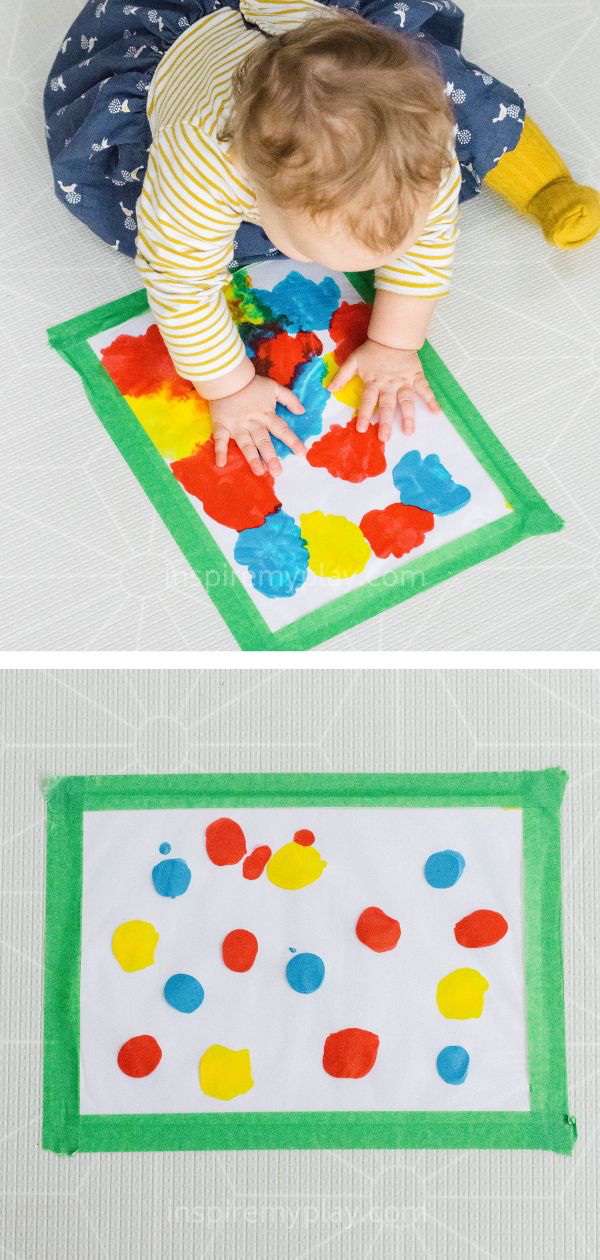
Pom-pom Sticky Wall
We do love a sticky wall and this particular one was lots of fun. We used a bag of pom-poms and a few cardboard tubes out of the recycling for this one. Make a sticky wall by taping contact paper (sticky-back plastic) sticky side up. The cardboard tubes should stick to the contact paper on their own but if you have a slightly heavy handed little one like me you might want to tape them on too! I used different size poms-poms and cardboard tubes to add an element of problem solving. This was a bit beyond Miss 14m but the others enjoyed it later when they got back from school/pre-school! This one needs close supervision 👀

Patio Painting
It doesn’t get much simpler than painting the patio with water but this keeps this is a great first experience at painting (without the mess!) and encourages early mark making which is an important stage before ‘formal’ writing.

Chickpea Play
There’s something so relaxing about using chickpeas to scoop and fill, not to mention the gorgeous sound they make when poured! Pairing with them with our rainbow blocks makes a great little play tray to explore. Of course if you don’t have these blocks, any objects to bury or containers to fill are going to be a winner. I find my little one is less inclined to dump everything out of a tray when the tray is already on the floor! That’s not to say it all stays in the tray by any means but it doesn’t travel nearly as far! And of course it means you can get your feet in to give it a good feel too, which is really what sensory play is all about! Do supervise little ones closely with this activity 👀

Wooden Balls
I bought these natural wooden balls and dyed them with food colouring before sealing with a plant based, non-toxic wax. I’ve had them on our play shelves with a muffin tin which appeals to a love of filling and emptying (but mostly emptying!!) for a little one. Meanwhile our older two have been little engineers building all sorts of ball runs using our building blocks and grimms rainbow. They’ve also made perfect balls of ice cream for our toy ice cream cones! Open-ended toys are the best.

Rainbow Rice and Puzzle Fun
My littlest loves filling and emptying! Adding a wooden puzzle to the mix was a great way of extending our rainbow rice fun. As well as filling the holes on the board, we buried the shapes in the rice and she enjoyed digging them out again! This beautiful shape puzzle was gifted to us from @big.little.baby.steps. It truly is gorgeous and I just love the chunky plywood shapes. It’s definitely one we will get a lot of use out of in learning about colours and shapes. It is also available in pastel shades or au naturel in their Etsy shop.


